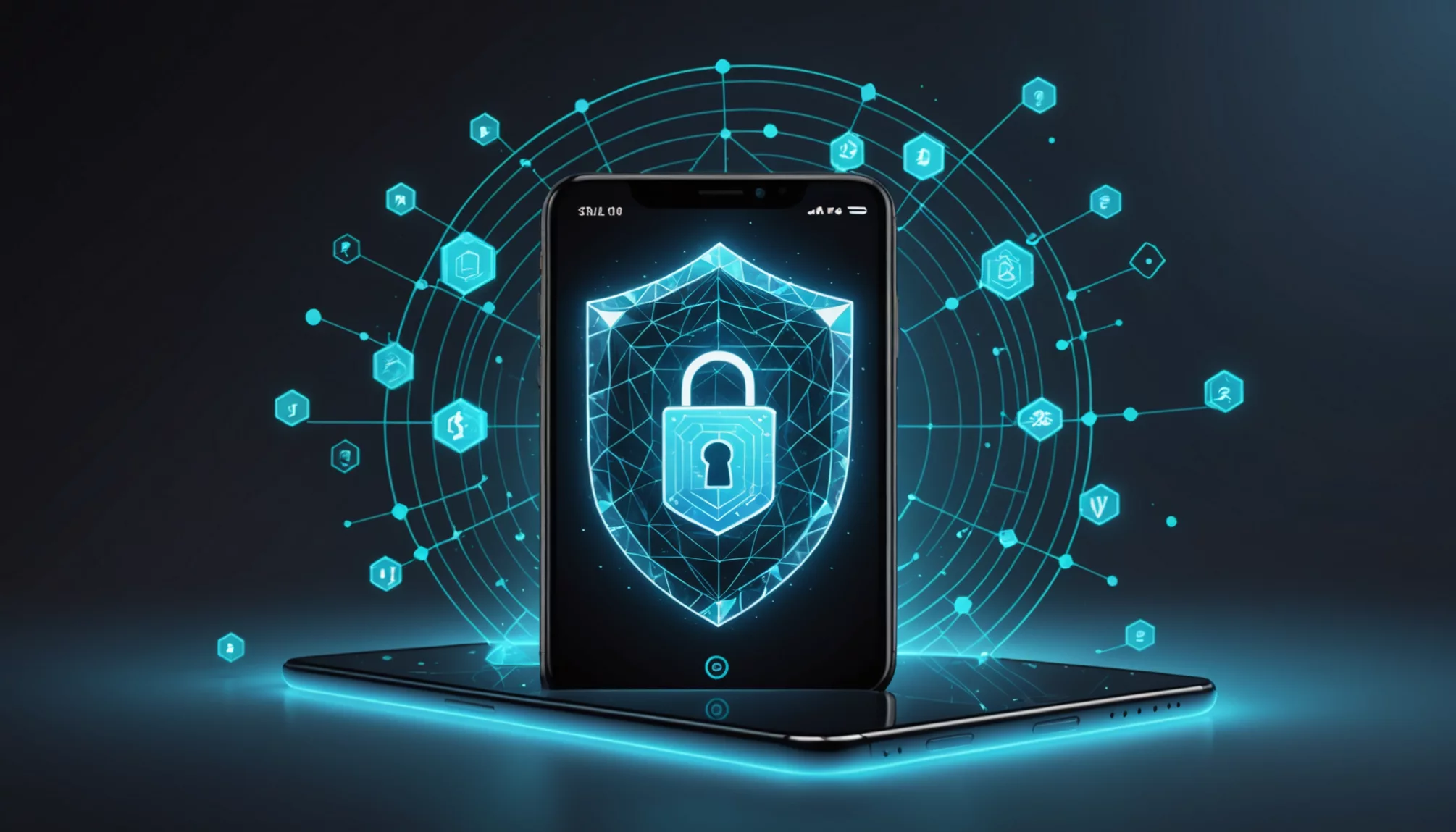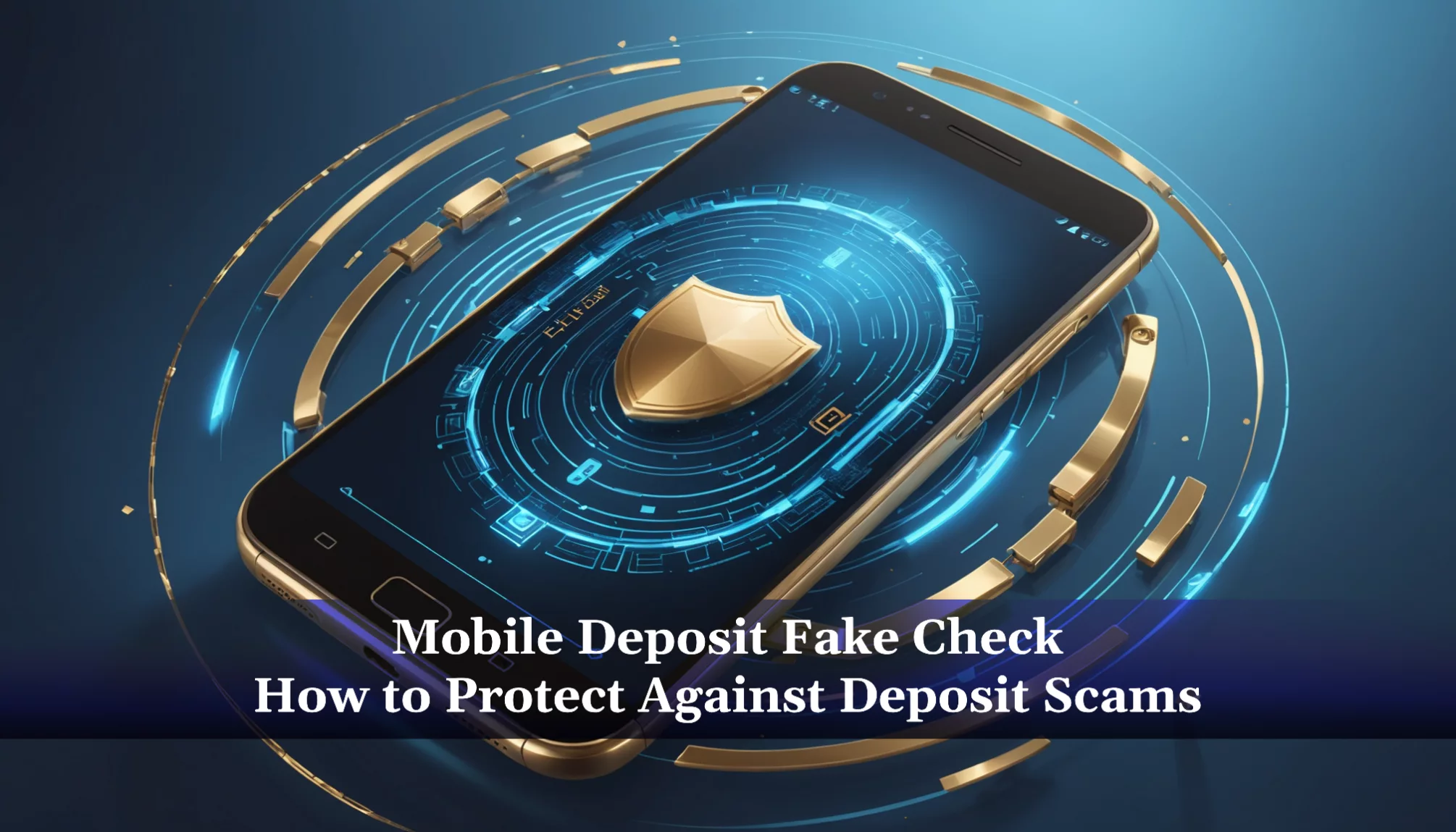Hey tech-savvy friends! Imagine checking your bank balance only to discover you’ve been tricked by a mobile deposit fake check scam – yeah, it’s as scary as it sounds! With more people than ever using their smartphones for banking, fraudsters are getting super creative with their digital tricks, especially targeting mobile check deposits through banking apps.
Think you’re too smart to fall for a scam? Even the most tech-savvy users can get caught off guard by these sophisticated schemes. In this guide, we’ll dive into the mind-blowing ways scammers create counterfeit checks, show you how to spot suspicious deposits like a pro, and reveal the latest security features that can keep your hard-earned money safe. Get ready to level up your mobile banking security game and become a digital defense master!
Understanding Mobile Deposit and Its Risks

What is Mobile Deposit? A Complete Overview
Mobile deposit uses a smartphone as a check-processing tool. This banking feature allows account holders to deposit checks by capturing images with a bank’s mobile app. Institutions rely on the Check 21 Act, which permits digital check images to be handled like paper checks.
Most major financial institutions provide this service at no extra cost, though deposit limits may vary. It automates key details such as the amount, routing number, and account information. According to the Federal Reserve, banks often apply security measures similar to those used for physical checks (Federal Reserve). Advanced encryption and fraud detection tools help reduce unauthorized access
Key Features of Mobile Deposit:
• Quick image capture of both sides of a check
• Automatic data reading for deposit accuracy
• Same-day or next-day funds availability
• Digital record-keeping to simplify transactions
Common Mobile Deposit Scams in Today’s Digital Banking
Scammers may create counterfeit checks that look real but turn out to be a mobile deposit fake check. Overpayment schemes, lottery winnings, and secret shopper checks often involve a fraudulent check.
Victims of a mobile deposit scam may be asked to deposit a check and wire transfer a portion of the funds before the deposit completes.
Frequent Mobile Deposit Fraud Tactics: • Bogus employment checks • Rental scams involving made-up deposits • Mystery shopper ads requesting urgent fund returns These tactics often exploit the trust of unsuspecting victims who believe they are engaging in legitimate transactions. Individuals should remain vigilant and report any suspicious activity to their financial institutions immediately. Additionally, those who have fallen victim to such scams may find it useful to seek out roblox ban appeal tips, as this can help protect their digital presence while they navigate the aftermath of the fraud.
Understanding Fake Checks in Mobile Deposits: Types and Risks
Fake check scams appear in many formats, including cashier’s checks and money orders. Each type poses a threat when banks release funds quickly, because the check may remain pending until it bounces. One mobile deposit fake check scheme might revolve around a job offer that seems too good to be true.
| Check Type | Common Use | Risk Level |
|---|---|---|
| Cashier’s Checks | Prize or lottery | Very High |
| Personal Checks | Employment offers | High |
| Money Orders | Shopping scams | Medium |
| Business Checks | Invoice fraud | High |
Warning signs include poor print quality, instructions to send the money back fast, or amounts just below daily deposit thresholds. The Consumer Financial Protection Bureau advises contacting the financial institution whenever a check looks suspicious.
Identifying a Deposit Scam: Warning Signs and Red Flags

Mobile deposit fake check scams are growing as more individuals use remote deposit. Fraudsters often send a check that seems authentic but proves bogus. Recognizing these schemes protects personal finances and helps financial institutions avoid undue risk.
How to Spot a Fake Check: Step-by-Step Guide
A careful review may prevent an overpayment issue or worthless check. The following steps help confirm whether a check is legitimate or part of a fake check scam:
1. Check Stock Quality
- Inspect the paper for consistent thickness and clear ink
- Examine color borders for signs of hacks or blurry edges
- Note any missing security threads
2. Security Features Examination
- Hold the check to light to see a watermark
- Look for microprinted text along the edges or signature line
- Tilt the check to verify color-shifting ink
Table: Essential Security Features of Legitimate Checks
| Feature | Location | What to Look For |
|---|---|---|
| Watermark | Background | Appears only when held to light |
| Microprint | Border | Tiny text, not blurry lines |
| Security Thread | Paper | Embedded metallic strip |
| Color-Shifting Ink | Dollar Amount | Changes color when tilted |
Top Warning Signs of Mobile Deposit Scams
Certain red flags point to a possible mobile deposit scam. A fraudster may give urgent requests or claim a large prize, then pressure a rapid transfer of funds:
• Urgent Request Patterns
- Demand for immediate deposits or wire transfers
- Promises of quick profit or once-in-a-lifetime deals
- Alleged emergencies that need fast action
• Financial Warning Signs
- Check amounts larger than expected
- Instructions to send money back right away
- Payments drawn from unfamiliar business accounts
Protecting Against Mobile Deposit Fake Check Scams

Proven Strategies to Safeguard Bank Accounts
Mobile deposit fraud prevention often begins with strong app security. Multi-factor authentication offers an extra barrier that discourages scammers. Many financial institutions also use biometric features, such as fingerprint or facial recognition, to prevent fraudulent checks.
Key measures include:
• Waiting at least seven business days before withdrawing deposited funds
• Setting up alerts for all transactions
• Creating complex passwords and updating them regularly
• Avoiding the sharing of login or verification codes
Monitoring account activity supports early detection of suspicious behavior. A daily review of balances and transactions helps identify unexpected withdrawals or deposits. Guidance on best practices is available through the FDIC and the Federal Reserve.
How to Report a Suspicious Mobile Deposit
Prompt reporting is essential when a deposit appears to be part of a mobile check deposit scam. Contacting a bank’s fraud department first can save funds and limit further damage. Clear documentation, including check images and deposit dates, assists investigations.
Recommended reporting steps:
- Call the bank’s fraud hotline
- Submit a complaint at ftc.gov/complaint
- Notify local law enforcement if the loss exceeds $1,000
- Secure copies of all questionable checks and related messages
Many institutions ask for written reports within 60 days. Agencies like the FTC and the FBI also accept scam-related details.
Essential Tips for Safe Mobile Banking Practices
Sound mobile banking habits offer protection against fake check scams. Verifying each check with the issuing bank lowers the risk of overpayment schemes. Private Wi-Fi networks and secure mobile devices help prevent unauthorized access to remote deposit apps.
Safe deposit guidelines:
• Photograph checks in a secure location
• Remove stored check images after successful deposits
• Sign out of banking apps after each use
• Update mobile banking apps as new versions become available
Banking professionals recommend installing current security software on each mobile device. Frequent password changes also reduce vulnerability.
Banking Insurance and Legal Protection Options
Standard FDIC insurance often covers up to $250,000 for each account. Some banks add zero liability policies that protect against unauthorized transactions. According to the FDIC, coverage may be limited if account holders ignore recommended security guidelines.
Protection typically includes:
• FDIC coverage at $250,000 per depositor
• Zero liability options for eligible fraudulent activity
• Additional insurance from certain institutions
• Legal support under specific account agreements
Compliance with security steps strengthens legal and financial safeguards. Terms and conditions found in official documents clarify each customer’s responsibilities and a financial institution’s obligations.
Getting Started with Secure Mobile Deposit

Mobile deposit helps individuals deposit checks securely with a smartphone or tablet. This process reduces paper checks at a branch and protects accounts from fraudulent check activities. Many financial institutions use advanced methods to counter mobile deposit fake check scams. This service also offers faster transactions and greater convenience.
Steps to Safely Deposit Checks via Mobile Banking
Individuals follow key steps to avoid becoming victims of a mobile deposit scam. They endorse each check with “For Mobile Deposit Only” and a signature. They photograph both sides of the check in a well-lit area, making sure all four corners appear. Most banks advise destroying the physical check immediately once the deposit clears.
Setting Up Mobile Deposit on a Banking App: Security Features
Banks rely on two-factor authentication to verify a user’s identity. They limit device registration to reduce unauthorized access and often use automated verification systems to detect altered checks. They also encrypt data during transmission for protection. Deposit limits differ by account type or tenure to curb fake check scams.
Mobile Deposit Limits and Verification Processes
Many institutions set daily deposit limits from $2,000 to $25,000 for personal accounts. Business accounts may qualify for higher limits based on history. If a deposit appears unusual, banks hold funds or require extra documentation. These procedures help prevent overpayment schemes, wire transfer fraud, and other remote deposit risks.
Current Research on Deposit Scams and Fraud Prevention

Latest Studies on Mobile Deposit Fraud Trends
Financial fraud is escalating across the financial services industry, with a striking 80% of organizations reporting fraud attempts or successful breaches in 2023 and 2024, a significant jump from 65% in 2022. Among the various forms of fraud, check fraud remains the most prevalent, impacting 65% of respondents. Despite the inherent risks associated with checks, they continue to be a vital tool for many businesses, as evidenced by the 70% of business owners who plan to maintain their use for the next two years. (Advancedfraudsolutions)
Expert Recommendations for Consumer Protection
Research from the CFPB indicates that strong security settings help prevent fake check scams. FTC recommend these steps for safer mobile check deposit:
• Use two-factor authentication to sign in
• Stay off public WiFi when depositing checks
• Monitor financial institution statements for fraudulent checks
• Report suspicious activity to authorities as soon as possible
| Security Measure | Protection Level | Implementation |
|---|---|---|
| Biometric Login | High | Fingerprint or Face ID |
| Transaction Limits | Medium | Automated caps |
| Image Encryption | High | Built-in app feature |
| Verification Delays | Medium | 2–3 business days |
Future Trends in Banking Security and Fraud Detection
To combat rising fraud, banks are increasingly using advanced technologies. Machine learning is being implemented to detect fraudulent mobile check deposits before funds are released. There’s also a growing trend towards using blockchain technology for enhanced verification, allowing for tracking and validation of paper checks throughout their processing lifecycle.
Additionally, organizations are investing in expanding biometric authentication methods to strengthen security and prevent losses from overpayments and fraudulent wire transfers.
Analysis of Recent Mobile Banking Security Breaches
Regional banks are facing a significant rise in remote deposit fraud, with scammers using sophisticated image editing techniques to create fake checks. Investigations indicate that these criminals frequently obtain personal information through email and social media scams.
Furthermore, there’s been a substantial 40% increase in synthetic identity fraud, leading banks and credit unions to intensify their transaction monitoring efforts. These trends underscore the urgent need for stronger security measures to defend against fake check scams.
Conclusion
Mobile check deposit scams are getting sneakier, but now you have the tools to protect yourself! Knowing how to spot fake checks and understanding common scam tactics is your first line of defense against fraudsters. Remember to always double-check any unexpected payments and be extra careful with checks from people you don’t know.
Staying safe with mobile banking is easier when you follow the security tips we’ve covered. Keep your banking app updated, use strong passwords, and never share your account details with anyone. If something seems too good to be true, trust your instincts and take a moment to verify before making that deposit. With these smart habits, you can enjoy the convenience of mobile deposits while keeping your money secure in 2025 and beyond!
FAQs
1. What are the most common tactics used in mobile deposit fake check scams in 2025?
Scammers frequently use overpayment schemes, fake job offers, and lottery winnings to entice victims. They send a check that appears legitimate, then pressure you to wire or transfer a portion of the funds before the check bounces. They also exploit rental scams and mystery shopper opportunities.
2. How can I verify if a check I received for mobile deposit is legitimate?
Inspect the check for security features like watermarks, microprinting, and color-shifting ink. Check the paper quality and ink clarity. If possible, contact the issuing bank directly to verify the check’s authenticity. Never rely solely on the check’s appearance.
3. What should I do if I’ve already deposited a suspected fake check and sent money to a scammer?
Immediately contact your bank’s fraud department to report the incident. Provide them with all relevant details, including check images and transaction records. File a complaint with the FTC at ftc.gov/complaint and notify local law enforcement if the loss is significant.
4. How can I protect myself from future mobile deposit fake check scams?
Enable multi-factor authentication on your banking app, use strong and unique passwords, and avoid sharing personal information. Wait at least 7-10 business days before spending funds from a deposited check. Regularly monitor your account activity and report any suspicious transactions promptly.
5. What are the legal implications of depositing a fake check, and what protections are available to me?
Generally, the account holder is liable for fake checks deposited into their account. However, Regulation E provides some consumer protections against fraudulent activity. Ensure you understand your bank’s policies and your rights under FDIC insurance and any zero-liability policies offered. Keep detailed records of all transactions and communications to support any claims.

